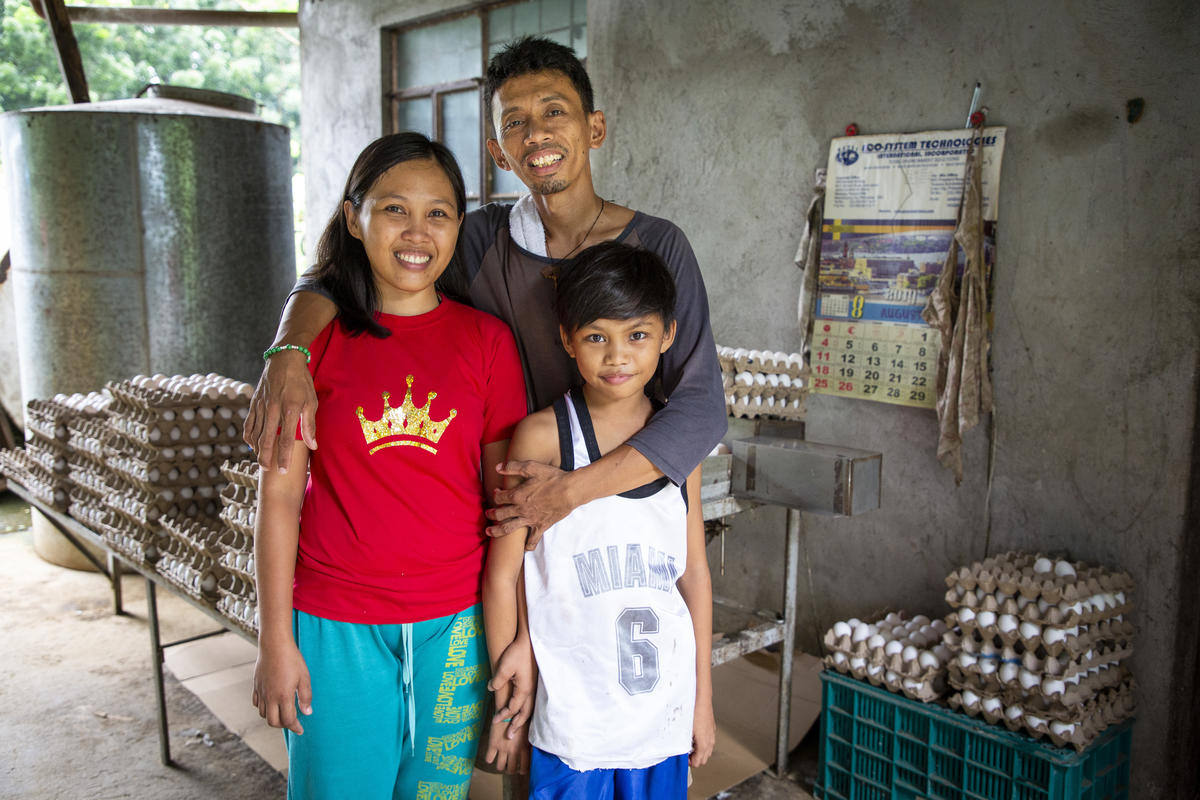One month on, typhoon Haiyan survivors start to return home
One month on, typhoon Haiyan survivors start to return home
A month after Typhoon Haiyan swept through the Visayas region of the Philippines, tens of thousands of displaced people are returning to their home areas. UNHCR's teams in five field locations continue to work with the government and partners to help address the needs of the most vulnerable among them.
According to government estimates, some 96,000 people currently remain in 430 evacuation centres in the region. The vast majority of displaced people are living outside the centres, often close to their destroyed homes.
UNHCR has so far distributed relief items to some 129,000 affected people. The aid includes much-needed emergency shelter and basic household items to tide them through the initial months. For example, the agency's teams are distributing family-sized tents to the worst-affected areas in Tacloban so that people can have a roof over their heads as they rebuild their homes. More tents have gone south to Tanauan for government sites targeting people moving out of evacuation
centres and coastal villages. UNHCR hopes that by the end of the year, more than 10,000 families can be moved out of overcrowded evacuation centres and unsafe coastal areas.
With electricity still down across the affected areas, the safety of women and children is of great concern. This week UNHCR started distributing hundreds of solar lamps to improve lighting and reduce security risks for families in Tacloban, Guiuan, Mercedes and Bantayan in northern Cebu.
As the co-lead of the protecting cluster in this emergency response, UNHCR is working with the government and partners to focus on communities that have not received assistance. This includes some indigenous communities and to those situated in more remote locations.
As the pace of return picks up and evacuation centres are being closed, it is important to ensure the dignified relocation of displaced people who are unable to return to their homes as a result
of the devastation or new building codes. This is especially true for people with specific needs including the elderly, disabled, indigenous people and households headed by women or children. Efforts are also needed to help their access to housing and livelihoods as well as documentation and legal assistance.
Even as many are returning home to rebuild, there is a movement of people, including reportedly teenagers, leaving from affected areas for big cities like Cebu and Manila to get family support and find work. UNHCR has also received reports of parents leaving their children with relatives in the typhoon-affected areas while they seek work in Manila.
UNHCR's partners - including the government's Department of Social Welfare and Development, and the International Organization for Migration - have posted staff at departure points in Tacloban, Ormoc and Guiuan to monitor these movements and try to prevent possible trafficking.
The UN refugee agency currently has 55 staff members dedicated to the emergency response in the Philippines. The agency also plans to establish a presence in Borongan in Eastern Samar province shortly. Earlier this week UNHCR increased its emergency appeal to US$19.2 million to boost life-saving aid and enhance its response to protection issues. To date the agency has received 43 percent of this amount.
For more information, please contact:
- In Tacloban, Kent Bolisay on mobile +63 929 457 7645, email [email protected]
- In Manila, Marie Michelle Liquigan on mobile +63 918 920 8765, email [email protected]
- In Bangkok, Vivian Tan on mobile +66 818 270 280, email [email protected]









